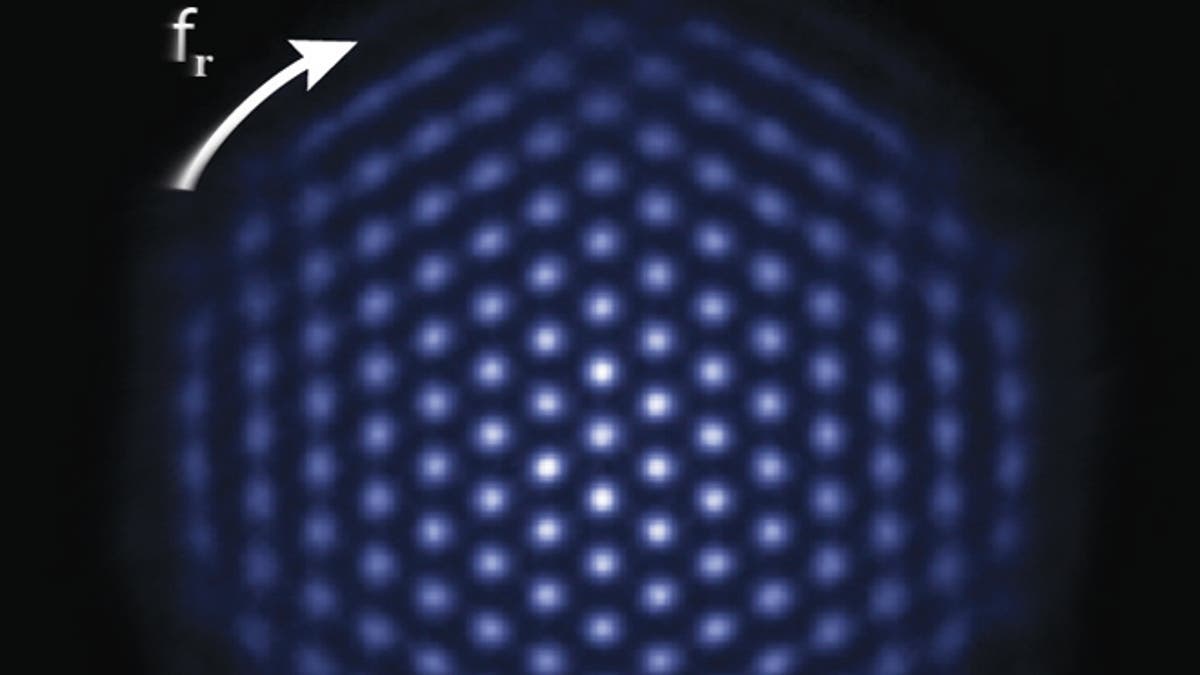
The NIST simulator consists of a tiny, single-plane crystal of hundreds of beryllium ions, less than 1 millimeter in diameter, hovering inside a device called a Penning trap. Here, the ions are glowing, indicating that they are all in the same quantum state. Under the right experimental conditions, the ion crystal spontaneously forms this nearly perfect triangular lattice structure. (J.W. Britton/NIST)
SYDNEY – A tiny crystal could hold the secret to computers of the future, unimaginably more powerful than today's most advanced supercomputers.
Preliminary tests indicate that the new processor can eclipse the capacity of current computers by an extraordinary 80 orders of magnitude -- a one with 80 zeros after it -- potentially taking computing into a new dimension.
Trumping even the super-advanced computer from the "Hitchhiker's Guide to the Galaxy" -- a custom-made planet Earth -- tests suggest the new device's potential can be matched only by a conventional computer as big as the known universe.
[pullquote]
"No classical computer could do what this simulator has the potential to do," said University of Sydney experimental physicist Michael Biercuk, who developed the crystal with scientists from the US and South Africa.
Biercuk said applications of the system, or systems like it, could include analyzing photosynthesis at an atomic level and developing materials for power distribution that allow electricity to flow without resistance.
The system, a tiny crystal of beryllium ions, uses quantum mechanics rather than conventional computing technology. While it is not the first processor to do so, it is the first to break through a threshold of the number of atoms needed to exceed the capacity of classical computers for certain problems.
Biercuk said it would take 10 to 20 years for the processor to be incorporated in commercially viable machines, and that it would never be used for general-purpose computing. But scientists may be able to use the technology long before then for analysis.
"Our particular system is useful for quantum magnetism. It sounds like a very esoteric field, but it is important for broad disciplines including chemistry, biology and materials engineering," he said.
So far the new crystal has been subjected only to preliminary "benchmarking" tests of its basic performance, with the results reported Thursday in the journal "Nature."
The system itself is a tiny "pancake" of 300 atoms suspended in a vacuum within a six-inch (15cm) metal "trap," operated by using lasers to manipulate individual atoms.




















